- About MAA
- Membership
- MAA Publications
- Periodicals
- Blogs
- MAA Book Series
- MAA Press (an imprint of the AMS)
- MAA Notes
- MAA Reviews
- Mathematical Communication
- Information for Libraries
- Author Resources
- Advertise with MAA
- Meetings
- Competitions
- Programs
- Communities
- MAA Sections
- SIGMAA
- MAA Connect
- Students
- MAA Awards
- Awards Booklets
- Writing Awards
- Teaching Awards
- Service Awards
- Research Awards
- Lecture Awards
- Putnam Competition Individual and Team Winners
- D. E. Shaw Group AMC 8 Awards & Certificates
- Maryam Mirzakhani AMC 10 A Awards & Certificates
- Two Sigma AMC 10 B Awards & Certificates
- Jane Street AMC 12 A Awards & Certificates
- Akamai AMC 12 B Awards & Certificates
- High School Teachers
- News
You are here
Who's That Mathematician? Paul R. Halmos Collection - Page 34
For more information about Paul R. Halmos (1916-2006) and about the Paul R. Halmos Photograph Collection, please see the introduction to this article on page 1. A new page featuring six photographs will be posted at the start of each week during 2012.
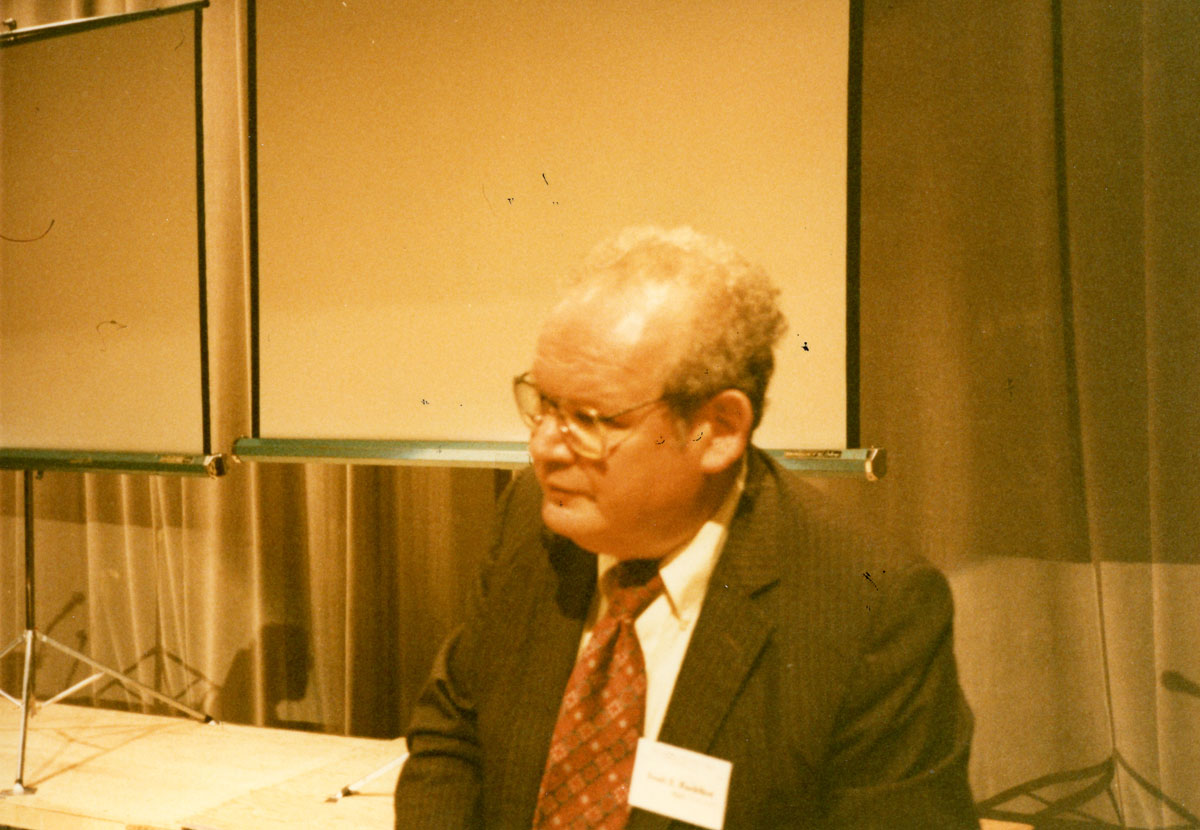
Halmos photographed Benoit Mandelbrot (1924-2010) in August of 1985 at the AMS-MAA Joint Summer Mathematics Meetings in Laramie, Wyoming. Born in Poland but raised in France from 1936 onward, Mandelbrot earned his Ph.D. in 1952 from the University of Paris under advisor Paul Lévy. He worked briefly at the Centre National de la Recherche Scientific in Paris (1955-58), but, due largely to a dislike of the influence of the Bourbaki school of mathematics, he spent most of his career in the U.S. Mandelbrot worked at the Institute for Advanced Study (IAS) in Princeton, New Jersey, during 1953-54; as an IBM Fellow at the IBM Watson Research Center in Yorktown Heights, New York, from 1958 onward (becoming Fellow Emeritus in 1993); and as Sterling Professor of Mathematical Sciences at Yale University in New Haven, Connecticut, from 1999 until his death in 2010. His mathematical viewpoint was primarily geometric and of course his most famous discovery of all was fractals and, in particular, his fractal representation of Gaston Julia’s ideas on iteration of functions from 1918. Mandelbrot did most of this work during the 1970s at the IBM Watson Research Center, where he had first noticed self-similarity in electronic noise during the 1960s. He published his popular book on the topic, The Fractal Geometry of Nature, in 1982. (Sources: MacTutor Archive, Mathematics Genealogy Project, IAS, Benoit Mandelbrot homepage)
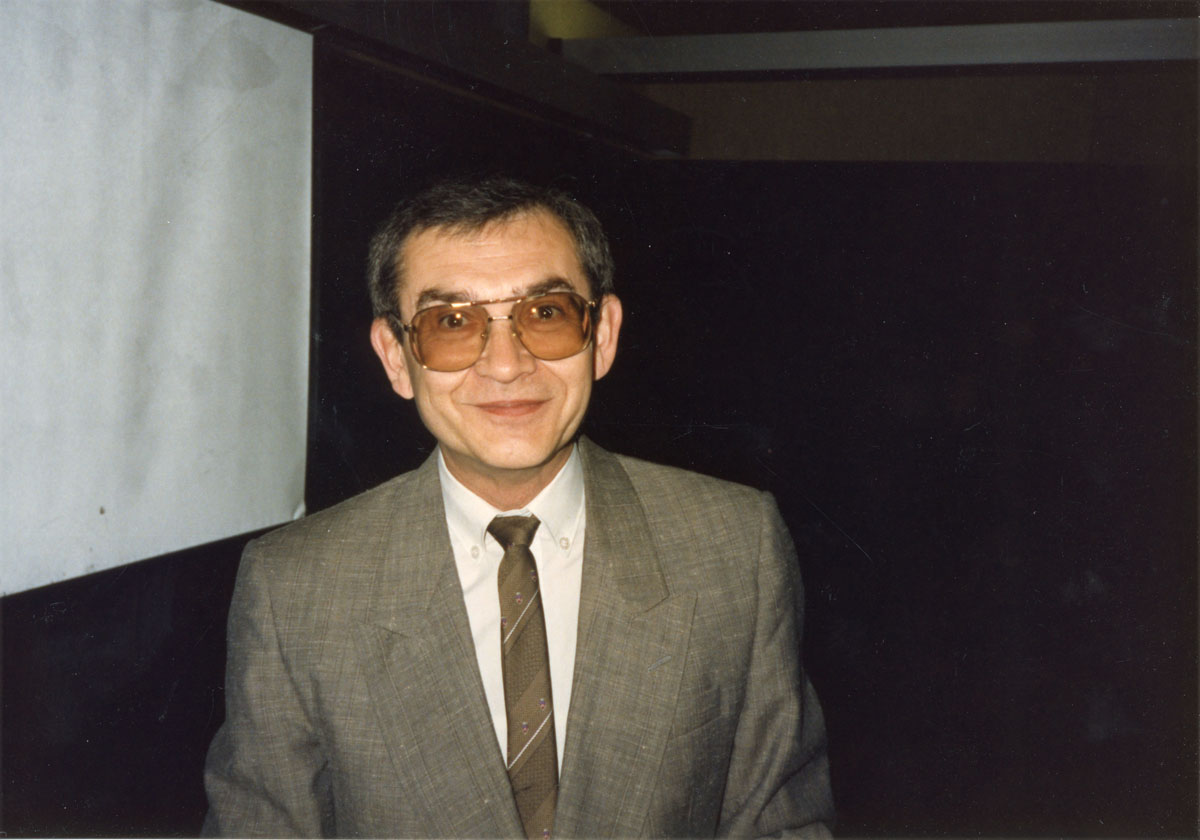
Yuri Manin was photographed by Halmos in November of 1989 in Berkeley, California, probably at the University of California, Berkeley. Born in Simferopol, Russia, Manin earned his Ph.D. in 1960 from Moscow State University under advisor Igor Shafarevich, and was appointed Principal Researcher at the Steklov Mathematical Institute in Moscow. In 1965, he became Professor of Algebra at Moscow State University. Having already made a name for himself in Russia, he soon became famous internationally when he presented his results on classification of rational algebraic surfaces at the International Congress of Mathematicians held in Moscow in August of 1966. Manin’s interests span algebra, including algebraic number theory, algebraic geometry, the algebra of physics (especially quantum groups), and homological algebra, and include many other areas of mathematics as well. From 1991 to 1993, he held one-year positions at Columbia University in New York City and at the Massachusetts Institute of Technology (MIT), and, in 1993, he joined the Max Planck Institute in Bonn, Germany, becoming Emeritus in 2005. He has advised at least 50 doctoral students in Russia, the U.S., and Germany. (Sources: MacTutor Archive, Mathematics Genealogy Project)
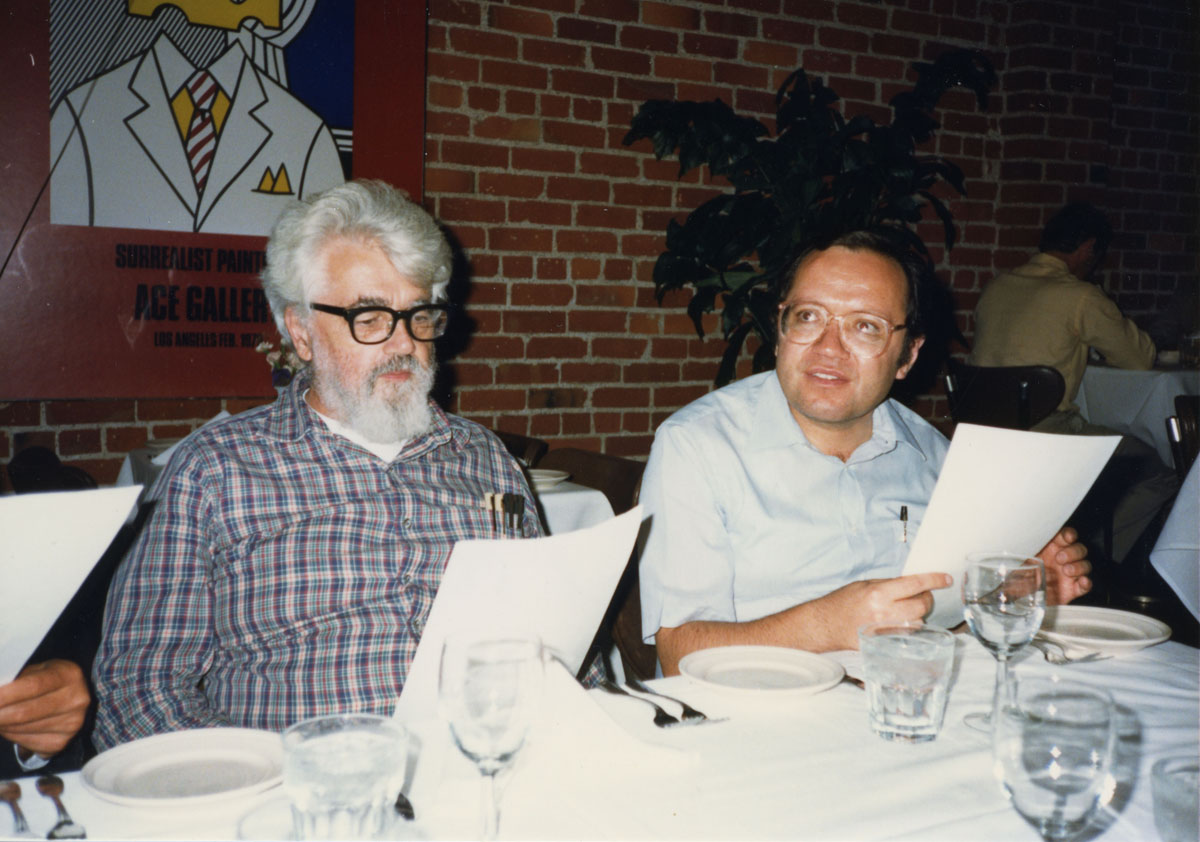
Halmos photographed John McCarthy (1927-2011) and Samih Obaid in October of 1986 in San Jose, California, where all three were about to enjoy dinner at a restaurant after McCarthy gave a talk at San Jose State University. Obaid was the lecture series chair for the San Jose State University Department of Mathematics and Computer Science during 1986-87 and had invited McCarthy to speak. McCarthy was on the computer science faculty at Stanford University and Halmos on the mathematics faculty at Santa Clara University at the time.
McCarthy earned his Ph.D. in 1951 from Princeton University with the dissertation “Projection Operators and Partial Differential Equations,” written under Solomon Lefschetz. However, he is famous as a computer scientist and especially as a researcher in the field of “artificial intelligence,” a term he coined in 1955. In 1958, he invented the computer programming language LISP and, in the late 1950s and early 1960s, he developed computer time-sharing. In 1966, he gained some fame for playing computer chess against Russian researchers and, in 1971, he received the Turing Award, the highest honor in computer science. He held faculty positions at Princeton from 1951 to 1953; at Dartmouth College in Hanover, NH, and MIT from 1955 to 1962; and at Stanford University in Palo Alto, California, from 1953 to 1955 and from 1962 onward. He co-founded both the MIT Artificial Intelligence Project and the Stanford Artificial Intelligence Laboratory, and he advised at least 29 Ph.D. students, all but two of them at Stanford. (Sources: Mathematics Genealogy Project, Stanford University obituary)
Samih Obaid earned his Ph.D. in 1977 from the Pennsylvania State University with the dissertation “Interpolating Sequences and Their Applications to Porous Exceptional Sets,” written under Donald Rung. He is Professor of Mathematics at San Jose State University, where he has taught since 1985. His current research interests are elasticity theory, fluid mechanics, integral equations, and complex analysis. Obaid remembers that Halmos attended nearly all of the SJSU Mathematics and Computer Science lectures that year, which included talks by McCarthy, Richard Hamming, Jerrold Marsden, Constance Reid, Donald Sarason, George Dantzig, and Jeffrey Ullman. (Sources: Mathematics Genealogy Project, San Jose State University)
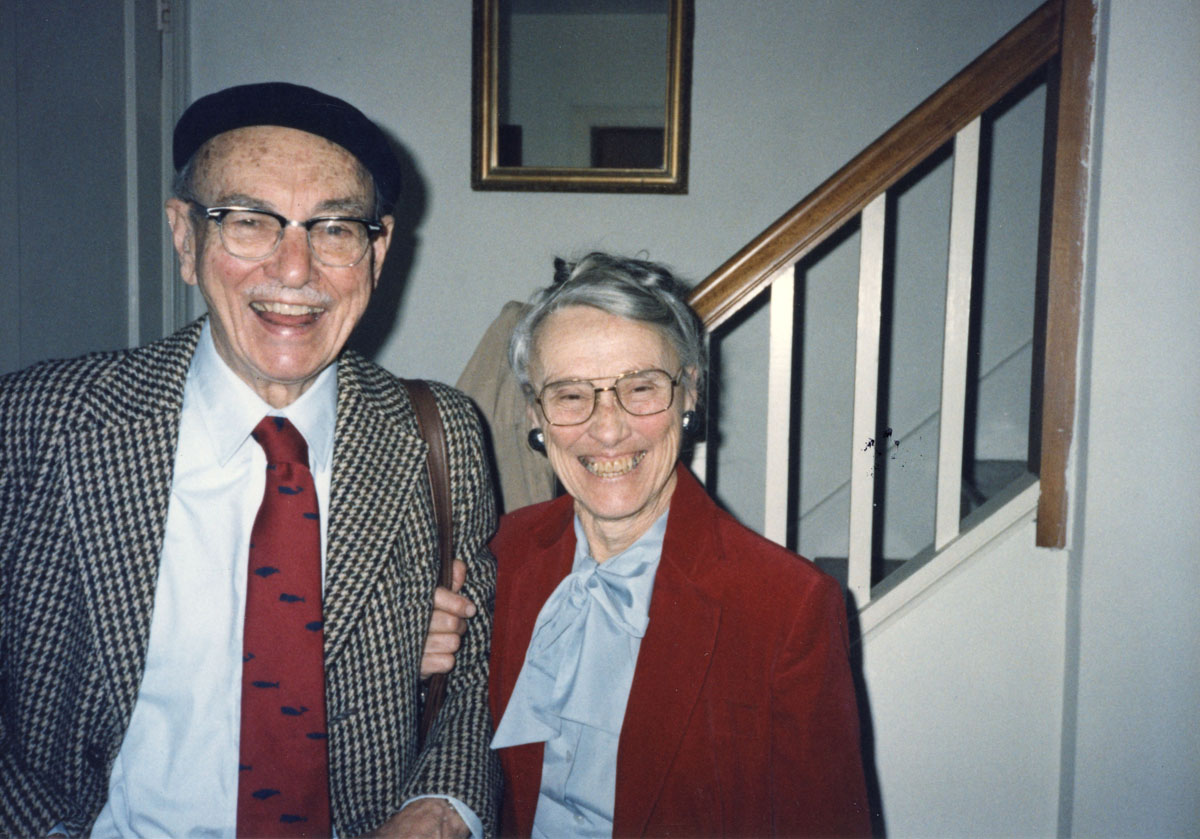
Edward James McShane (1904-1989) and his wife Virginia McShane were photographed by Halmos in March of 1986 in Charlottesville, Virginia. Born in New Orleans, Louisiana, “Jimmy” McShane earned bachelors and masters degrees at Tulane University in his hometown, then moved to the University of Chicago to earn a Ph.D. in calculus of variations written under Gilbert Bliss and Lawrence Graves (whose photo is on page 18 of this collection) in 1930. After brief stints at Princeton, Ohio State, Harvard, Chicago, Göttingen (Germany), and Princeton again, he accepted a position at the University of Virginia in 1935 and spent most of his career there, becoming Professor Emeritus in 1974. His research areas were calculus of variations, integration theory (on which he wrote three books), stochastic models (one more book), and ballistics. He wrote the book, Exterior Ballistics, on the latter topic with John L. Kelley (page 27 of this collection) and Franklin V. Reno. Published in 1953, much of the research for this book was done during the early 1940s, when McShane was head of the Ballistics Research Laboratory at the Aberdeen Proving Ground in Maryland during World War II (1942-1945). McShane was president of the MAA during 1953-1954 and president of the AMS during 1959-1960. (Sources: MacTutor Archive, Mathematics Genealogy Project, MAA Presidents, AMS Presidents)
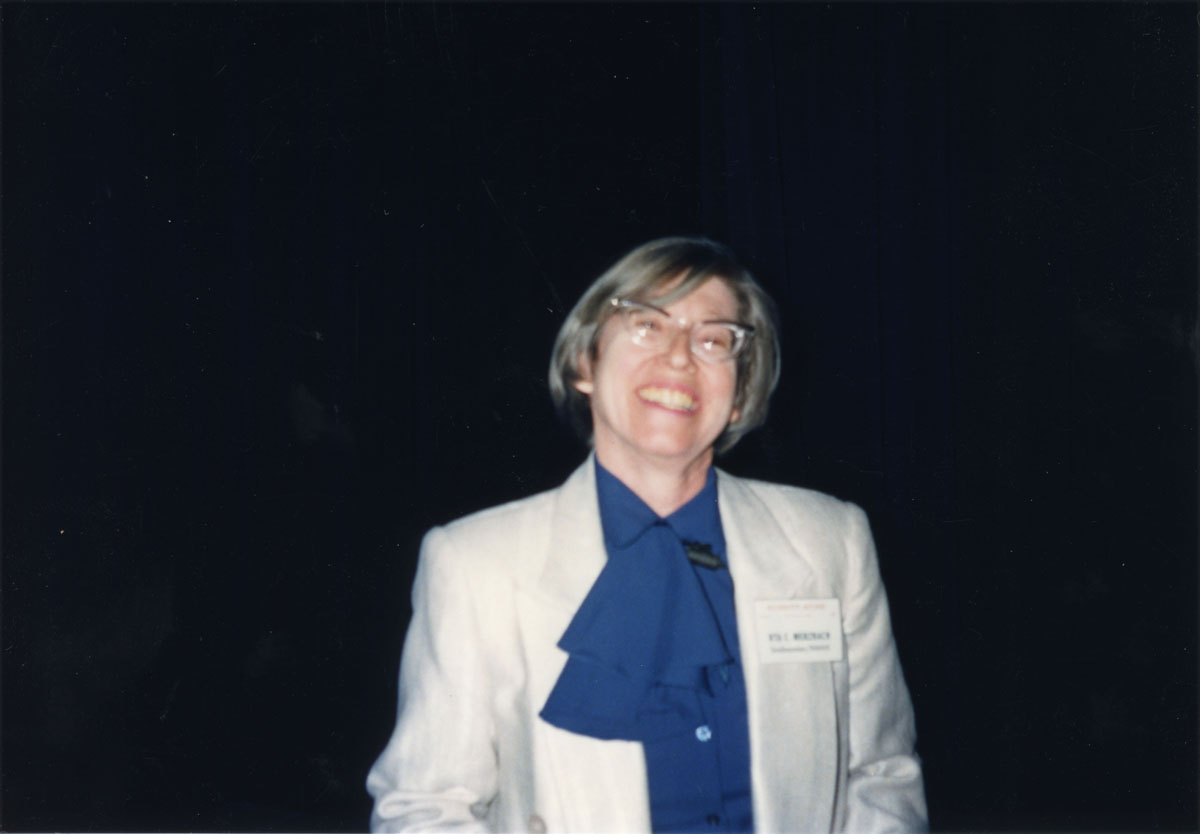
Halmos photographed Uta Merzbach (1933-2017) in January of 1987 in San Antonio, Texas, probably at the Joint Mathematics Meetings. Merzbach earned her Ph.D. in mathematics and the history of science in 1965 from Harvard University with the dissertation, “Quantity of Structure: Development of Modern Algebraic Concepts from Leibniz to Dedekind,” written under algebraist Garrett Birkhoff (page 6 of this collection) and historian of science I. Bernard Cohen. She was the first-ever Curator of Mathematics (and computer science) at the Smithsonian Institution in Washington, D.C., serving from 1963 to 1987, when she became Curator Emeritus. In 1991, Merzbach updated Carl Boyer’s classic A History of Mathematics, originally published in 1968, and, in 2011, she published a further revision of this book. She also wrote Carl Friedrich Gauss: A Bibliography (1984) and she assisted Peter Duren (page 13 of this collection) with his three-volume A Century of Mathematics in America (1989). (Sources: Mathematics Genealogy Project; “Mathematical Treasures of the Smithsonian Institution,” AMS Notices 46:5 (May 1999), pp. 528-534)
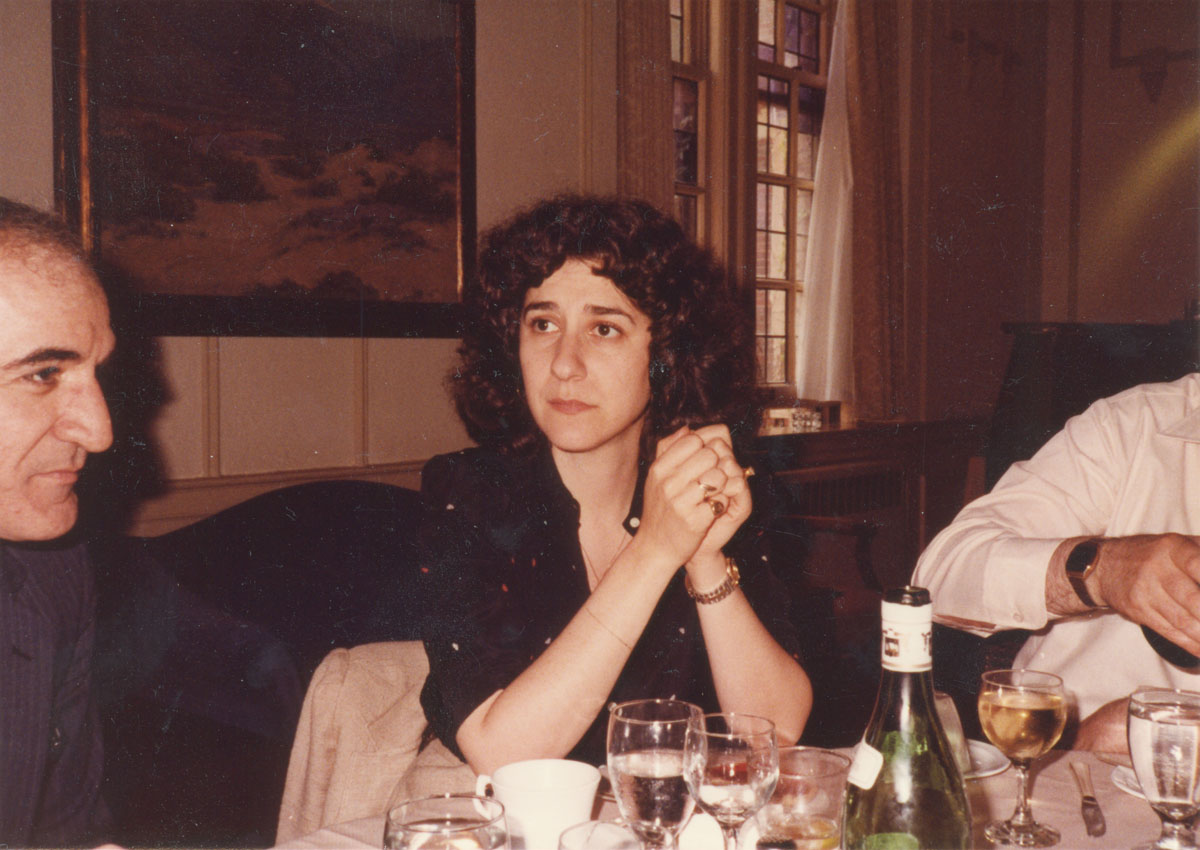
Halmos photographed Jill Mesirov in May of 1983 at a meeting of the AMS Council in Ann Arbor, Michigan. Mesirov was associate director of the AMS from 1982 to 1985 and she remembers that Halmos was a member of the executive committee during that time. Mesirov earned her Ph.D. in 1974 from Brandeis University with the dissertation “Perturbation Theory for the Existence of Critical Points in the Calculus of Variations,” written under Richard Palais. From 1985 to 1995 she was director of research at Thinking Machines Corporation, and from 1995 to 1997 she was a computational biology and bioinformatics manager at IBM. In 1997, she joined the Whitehead Institute/MIT Center for Genome Research and, in 2004, when this unit became a key part of the newly formed interdisciplinary Broad Institute of MIT and Harvard, she became associate director and chief informatics officer, directing the computational biology and bioinformatics organization. As president of the Association for Women in Mathematics from 1989 to 1991, Mesirov was instrumental in strengthening AWM’s relationship and standing with the National Science Foundation (NSF) and in initiating its ongoing activities at Society for Industrial and Applied Mathematics (SIAM) meetings. She also directed AWM’s 20th anniversary celebrations in 1991. (Sources: Mathematics Genealogy Project, Broad Institute biography, Broad Institute History, AWM History, AWM Presidents)
For an introduction to this article and to the Paul R. Halmos Photograph Collection, please see page 1. Watch for a new page featuring six new photographs each week during 2012.
Regarding sources for this page: Information for which a source is not given either appeared on the reverse side of the photograph or was obtained from various sources during 2011-12 by archivist Carol Mead of the Archives of American Mathematics, Dolph Briscoe Center for American History, University of Texas, Austin.
Janet Beery (University of Redlands) and Carol Mead (Archives of American Mathematics, University of Texas, Austin), "Who's That Mathematician? Paul R. Halmos Collection - Page 34," Convergence (January 2012), DOI:10.4169/loci003801




